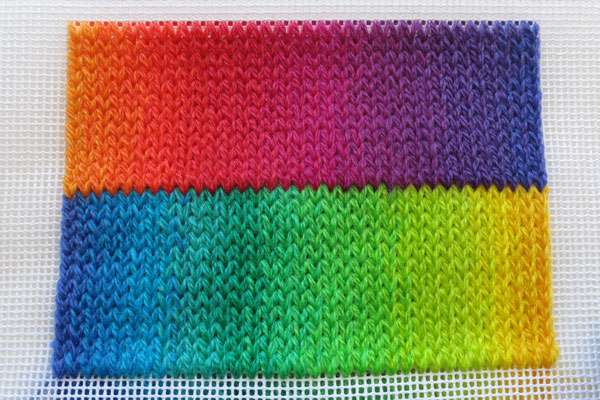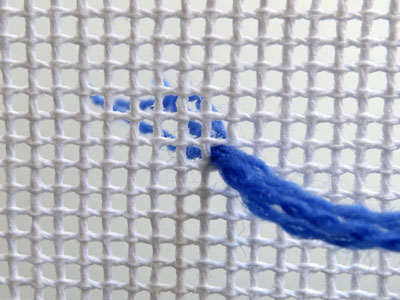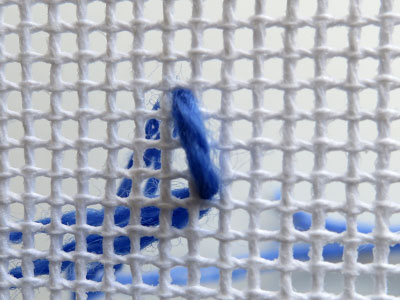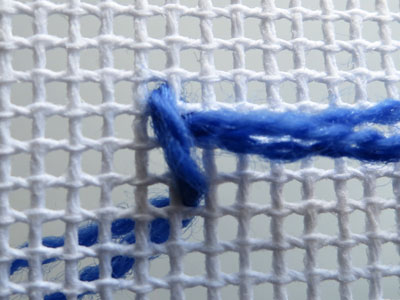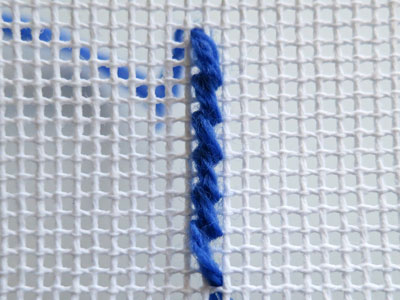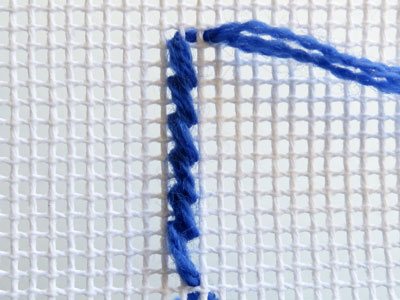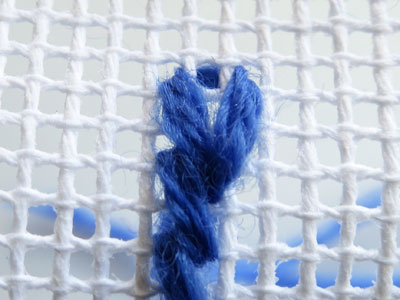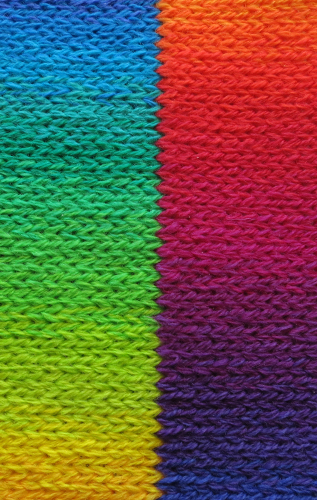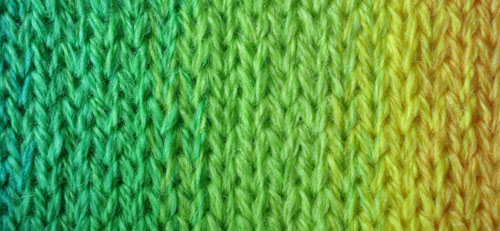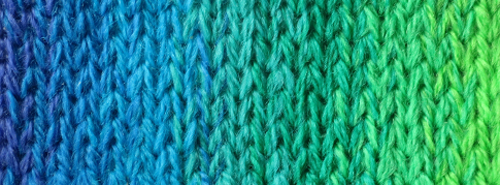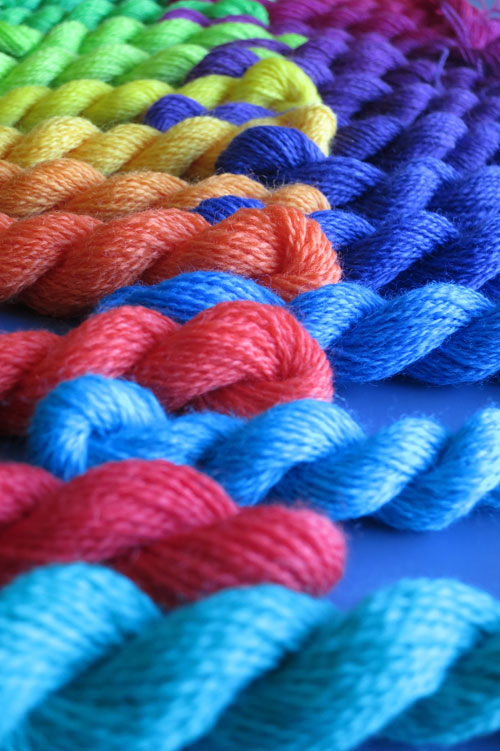We have a winner!
Louise from Australia is the winner of the mystery Blue/Green study. Louise correctly identified the technique as an embroidery technique – known as the knitting stitch – performed on needlepoint canvas. Here is a picture showing the piece and the canvas.
The specific technique I used to create this piece was a modified knitting embroidery stitch on needlepoint canvas (12:1) using three strands of the Lace weight merino yarn. As this embroidery stitch is made in columns it allows you to graduate colours vertically easily.
I graduated in three steps (columns) to the next colour and so on around the rainbow. The original knitting embroidery stitch is 4 squares high. But, I thought it looked too long compared with actual stocking stitch so I modified it be 3 squares high.
Below is a step by step photo tutorial on how to make the stitch.
Louise will be receiving the prize of her 5 favorite colours in the Marta’s Yarns mini skein range. Also, as a special thank you to everyone who participated in my first online competition, all submitters will be emailed a 20% discount coupon code for an order from the Marta’s Yarns collection of knitting yarns.
Step 1 – Commencing at the bottom left corner of the area you wish to embroider, bring three strands of the lace weight yarn up through a square in the canvas. We will be working the pattern from left to right so make sure you allow enough space to the right of your starting point.
Step 2 – Insert the needle three squares up and one square to the left.
Step 3 – Bring needle up one square down and one square to the right.
Step 4 – Repeat steps 2 and 3 until you have the desired column height, ending with step 2.
Step 5 – Bring needle up two squares to the right.
Step 6 – Insert the needle three squares down and one square to the left.
Step 7 – Bring needle up one square up and one square to the right. Repeat steps 6 and 7 until you are at the end of the column.
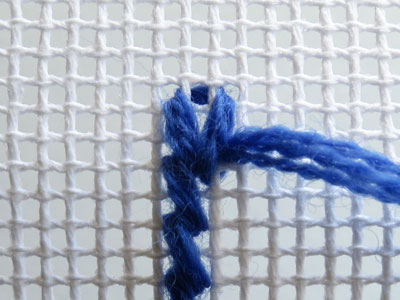
Step 8 – To start a new column in the same colour bring the needle up two squares to the right.
Final clue
Another 24 hours has passed and still no progress on cracking this mystery technique. Here are some more of the suggestions that have been submitted – tunisian crochet, dip dyeing a knitted piece, circular knitting and various stranding techniques.
So I will give you one last clue and if no one works out the technique by tomorrow lunch time – Melbourne time – I will reveal the technique and give the prize to the most imaginative suggestion made.
The CLUE – The Blue/Green study was not knitted or crocheted but stranding is used carefully to achieve the color graduation. I used the Lace weight merino mini skeins collection – read the title of the page for another clue.
Here is an image of the completed piece – now called Rainbow Merino Study.
The mystery continues
No one has cracked the mystery of how the Green/Blue study was made yet. Here is a clue and a photo of the Green/Yellow part.
Think outside – and over – the square.. we first go up and then down again.
Guess how this was made and win 5 mini merino skeins
I am running my first competition today. The first person to guess how my Blue/Green study above was made will win 5 mini merino skeins from the Marta’s Yarns collection of Merino lace weight mini skeins. You get to pick your own colours too!
Email your answer to pat@patriciacantosdesign.com
Pat
Pre-xmas yarn sale – 4 days only
Don’t miss out on 40% off the entire Marta’s Yarns Collection for the next 4 days.
Sale includes the glorious new Marta’s Yarns lace merino mini hanks. Perfect for intarsia, fair isle, graduated work, needlepoint and embroidery.
Simply enter this coupon code before checking out XMAS2014.
NB: We refund you the difference between the flat shipping rate and the actual shipping costs based on weight prior to finalising your order.
Sale ends midnight Thursday 13th November.
Learn to knit Latin American style
I have just finished production of a new video that demonstrates the method of knitting my Chilean born mother taught me – known as the continental combined method. I taught classes in this method when we had our Melbourne yarn shop open.
There has been an ongoing debate about whether the continental or english method is the fastest way to knit. I recall one customer coming into the shop a few years back determined to demonstrate that the English method was faster than continental. There was no denying that she was a fast knitter. However, when it comes to rib and seed stitch, I think continental wins hands down.
Apart from speed, there are also ergonomic considerations when it comes to which method to use. Some people have found that using both methods eases the strain on your hands as they use different muscle groups.
Give Latin American style knitting a go and let me know your verdict.

